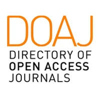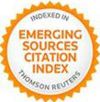Abstract
Digital 2D and 3D visualizations play a representative as well as an operative role in the field of investigation of Cultural Heritage. At the beginning these digital 2D and 3D visualizations were especially used to present results of research projects, but today they become more and more a scientific tool during the research process.
Digital 2D and 3D visualisations have the potential to extend the traditional methods of all participating disciplines in research of Cultural Heritage. Thus, these visualisations could be defined as spatial and object-related iconic epistemological models and media. In these iconic models the knowledge is collected, merged and made visible.
Keywords
Full Text:
PDFDOI: http://dx.doi.org/10.2423/i22394303v10n1p19
References
Arbeitsgruppe Digitale Rekonstruktionen (2014). Memorandum Herausforderungen Digitaler Rekonstruktionen. Retrieved from https://digitale-rekonstruktion.info/downloads/
Mahr, B. (2004). Das Wissen im Modell. Retrieved from http://www.tu-berlin.de/fileadmin/fg53/KIT-Reports/r150.
Krause, C. & Reiche, R. (2015). Ein Bild sagt mehr als tausend Pixel? Digitale Forschungsansätze in den Bild- und Objektwissenschaften. Glückstadt, Verlag Werner Hülsbusch.
Hugh, D. (2009). The London Charter for the computer-based Visualisation of Cultural Heritage. Draft 2.1, 7 February 2009. Retrieved from http://www.londoncharter.org/.
Knapp, I. (2019). Visual Humanities. Retrieved from https://inspire-lab.net/2016/01/16/visual-humanities.
Backes, J., Pfarr-Harfst, & Grellert, M. (forthcoming). Digitale Modelle als Werkzeuge des Erkenntnisgewinns und der Vermittlung von Forschungsergebnissen - Inhalte, Verfahren und Ergebnisse im Projekt WESA. In Seng, E. & Göttmann, F. (Ed.), Objekt – Dokument – Genese, Abschlusstagung des Projekts WESA. Berlin.
Grellert, M. & Pfarr-Harfst, M. (2019). Die Rekonstruktion - Argument – Methode. Minimaler Dokumentationsstandard im Kontext digitaler Rekonstruktionen. In Kuroczyński, P., Pfarr-Harfst, M. & Münster, S. (Ed.). Der Modelle Tugend 2.0 – Digitale 3D Rekonstruktion als virtueller Raum der architekturhistorischen Forschung (pp. 264-280). Heidelberg: arthistoricum.net.
Grellert, M. (2007). Immaterielle Zeugnisse: Synagogen in Deutschland. Potenziale digitaler Technologien für das Erinnern zerstörter Architektur. Bielefeld:
Pfarr-Harfst, M. & Wefers, S. (2016). Digital 3D reconstructed models – Structuring visualisation project workflows. In Digital Heritage - Progress in Cultural Heritage: Documentation, Preservation, and Protection. Proceedings of the 6th International Conference EuroMed 2016, Nicosia, Cyprus, October 31 – November 5, 2016, Part I (pp. 544-556). Cham: Springer International Publishing.
Pfarr-Harfst, M. (2016). General workflows, documentation approaches and principles of 3D reconstructions. In Münster, S., Pfarr-Harfst, M., Kuroczyński, P. & Ioannides, M. (Ed.). How to manage data and knowledge related to interpretative digital 3D reconstructions of Cultural Heritage? Cham: Springer International Publishing.
Pfarr-Harfst, M. (2015). Investigation of 3D modelling workflows in CH with the object of development of key concepts and definitions. Retrieved from http://www.cosch.info/documents/10179/150264/Pfarr-Harfst_STSM+graphical+abstract_london_TD1201.pdf/d0218869-c10a-4b9c-a2aa-dc371c5c8d57
Pfarr-Harfst, M. (2014). 25 Years of Experience in Virtual Reconstructions - Research Projects, Status Quo of Current Research and Visions for the Future. In Giligny, F., Djindjian, F. Costa, L., Moscati, M. & Robert, S. (Ed.). CAA2014 – 21st Century Archaeology. Concepts, Methods and Tools. Proceedings of the 42nd Annual Conference on Computer Applications and Quantitative Methods in Archaeology (pp. 585-592). Oxford: Archeopress.
Pfarr-Harfst, M. (forthcoming). Digital 3D reconstructed Models in museum context - Is there any authenticity?. In Proceeding of the Conference Museen – Orte des Authentischen. Mainz: Verlag des Römisch Germanischen Zentralmuseums.
Pfarr-Harfst, M. (2013). Research of Cultural Heritage - Virtual Scientific Models. In Proceedings of the 17th International Conference on Cultural Heritage and New Technologies. Retrieved from http://www.chnt.at/wp-content/uploads/eBook_CHNT17_PfarrHarfst.pdf
Heintz, B. & Huber, J. (2001). Mit dem Auge denken: Strategien der Sichtbarmachung in wissenschaftliche und virtuellen Welten. Wien, New York: Springer.
Mößner, N. (2012). Zur Einführung: Visualisierung und Erkenntnis. In Liebsch, D. & Mößner, N. (ed.). Visualisierung und Erkenntnis. Bildverstehen und Bildverwenden in Natur- und Geisteswissenschaften (p.10). Köln: Herbert von Halem Verlag.
International Forum of Virtual Archaeology (2014). Principles of Seville. International Principles of Virtual Archaeology. Retrieved from http://www.arqueologiavirtual.com/carta/?page_id=437.
Erway, R. (2010). Defining Born Digital, 1. Retrieved from https://www.oclc.org/content/dam/research/activities/hiddencollections/borndigital.pdf.
Münster, S. (2011). Entstehungs- und Verwendungskontexte von 3D-CAD-Modellen in den Geschichtswissenschaften. In Meissner, K. & Engelien, M. (Ed.). Virtual Enterprises, Communities & Social Networks (pp. 99-108). Dresden: TUDpress.
Münster, S. (2014). Interdisziplinäre Kooperation bei der Erstellung virtueller geschichtswissenschaftlicher 3D-Rekonstruktionen. Dresden: TUDpress.
Münster, S., Kuroczyński, P. Pfarr-Harfst, M., Grellert, M. & Legyel, D. (2015). Future research challenges for a computer-based interpretative 3D reconstruction of cultural heritage – A German community’s view. ISPRS Annals of Photogrammetry, Remote Sensing and Spatial Information Sciences, Volume II-5/W3, 207-213. Retrieved from https://www.researchgate.net/publication/282522241_Future_Research_Challenges_for_a_Computer-Based_Interpretative_3D_Reconstruction_of_Cultural_Heritage_-_A_German_Community%27s_View.
Hermon, S. (2012). Scientific Method, Chaîne Opératoire and Visualization - 3D Modelling as a Research Tool in Archaeology. In Bentkowska-Kafel, A., Denard, H. & Baker, D. (Ed.). Paradata and Transparency in Virtual Heritage (pp.13-22). London: Taylor & Francis Ltd.
Article Metrics
Metrics powered by PLOS ALM
Refbacks
- There are currently no refbacks.
Copyright (c) 2020 Mieke Pfarr-Harfst

This work is licensed under a Creative Commons Attribution-NonCommercial-NoDerivatives 4.0 International License.
SCIRES-IT, e-ISSN 2239-4303
Journal founded by Virginia Valzano





